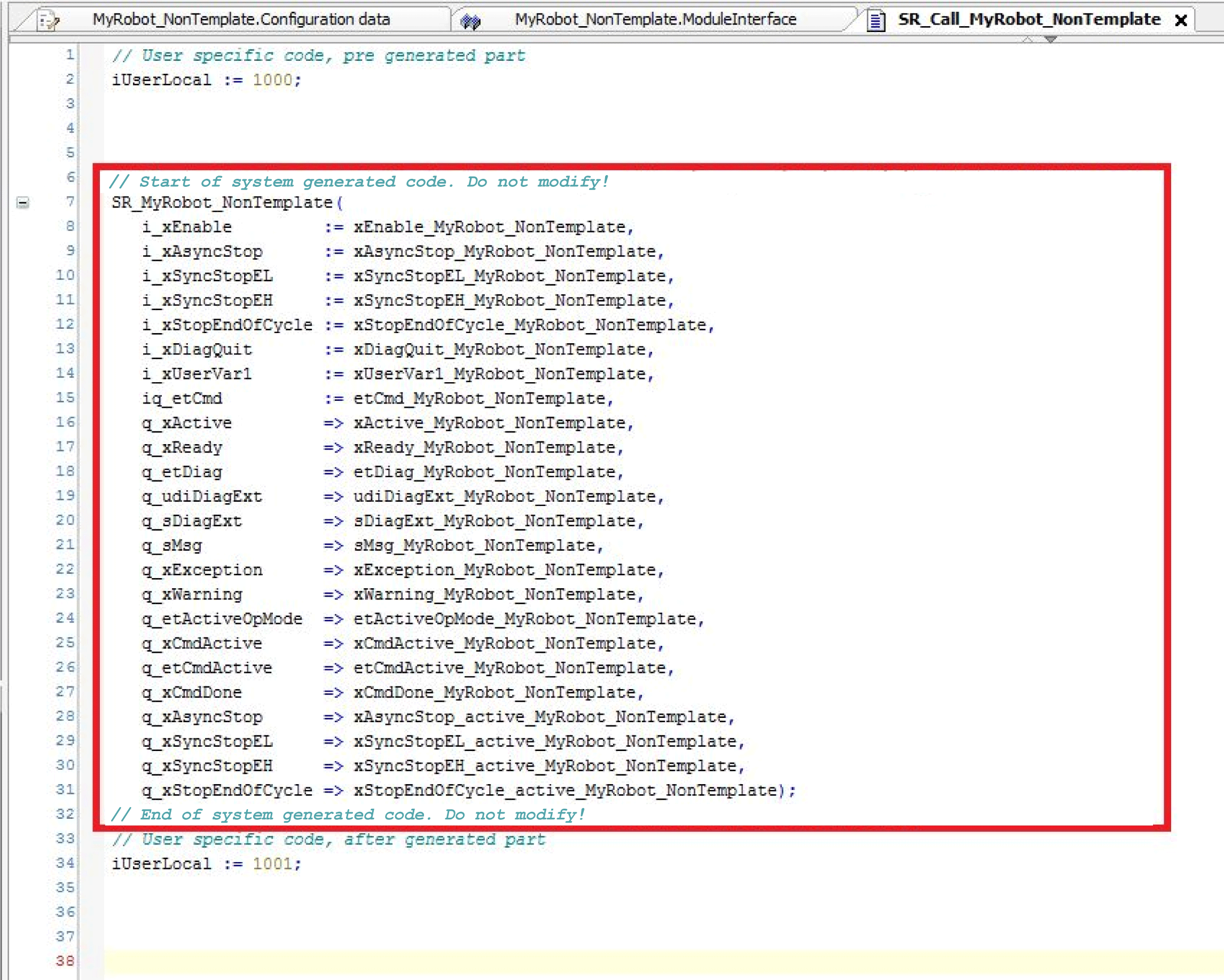Code Generation Option for Non Template Robots
Generate POU Instances Option
With the dialog box, you can create a program and call the robot instance and its corresponding task automatically.
Adding a new robot node with code generation:
|
Step |
Action |
|---|---|
|
1 |
For (1), select . |
|
2 |
For (2), select . 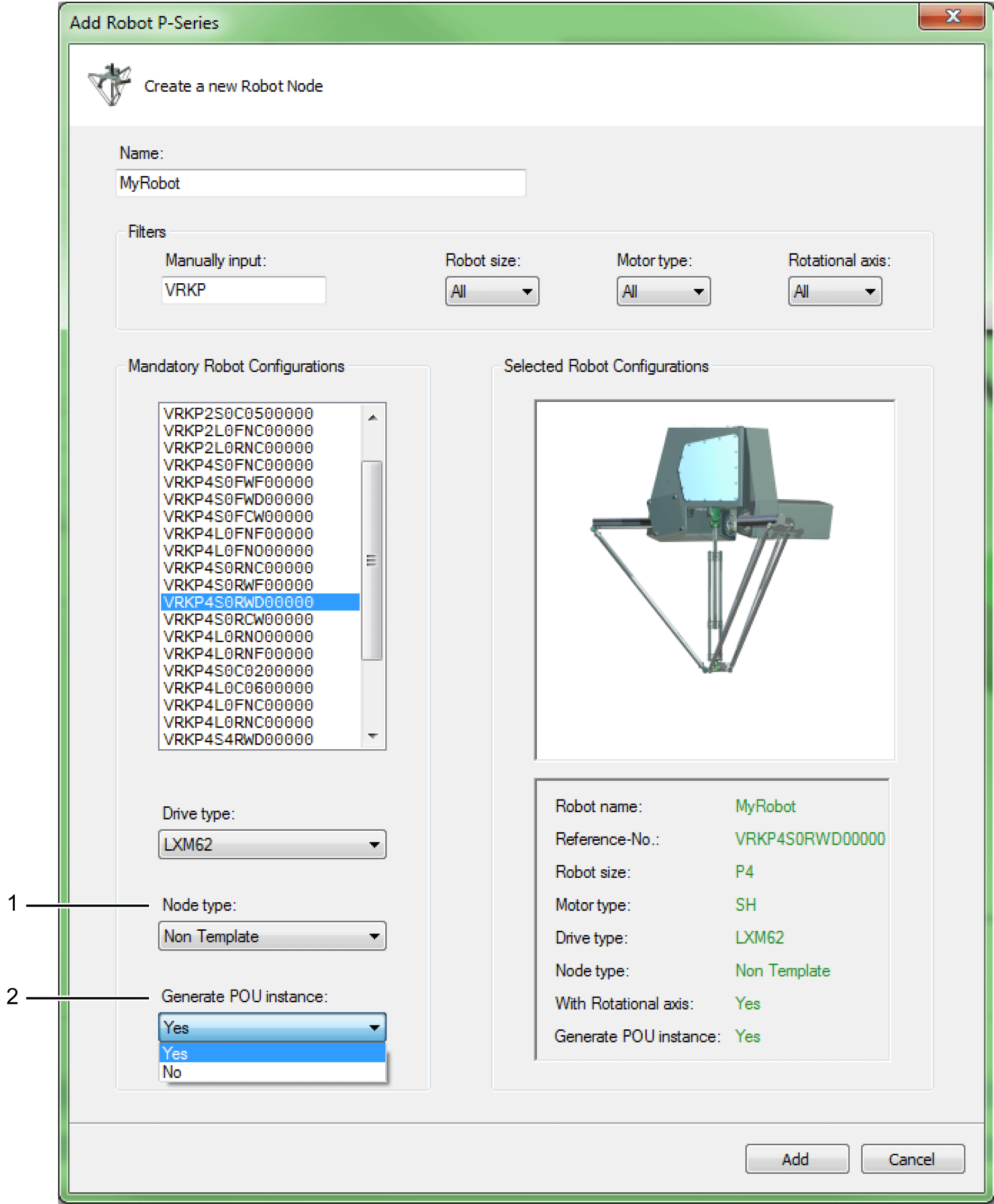
|
Generated POUs
If you select the option, the three following elements are added to your project:
-
A call program (PRG) is added to your project.
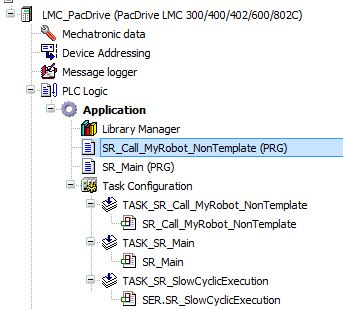
-
A corresponding task is added to your project.
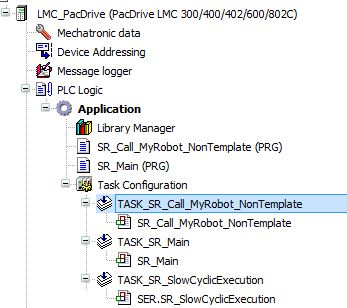
-
The POU call of the call program (PRG) within the task is added to your project.
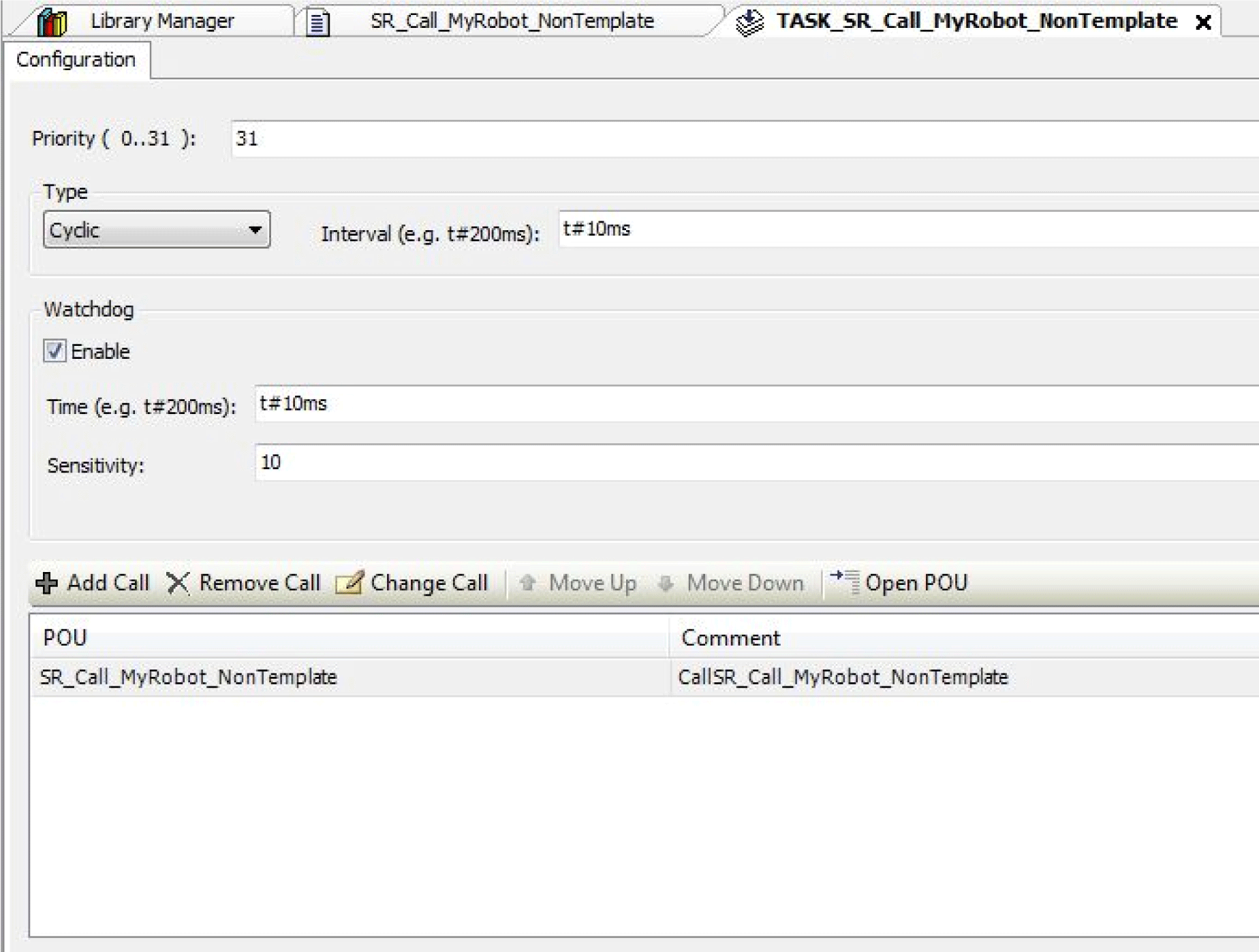
After the automatic generation procedure by the system, the project can be build and downloaded to the controller.
Trigger for Program Call Regeneration
The most efficient way to exchange data with the robot is via .

For details, refer to Data Exchange with ModuleInterface.
Regeneration Trigger
If you added / deleted variables within the dialog box and then entered the object under , the call program (PRG) is regenerated with the modified variables.
The regeneration procedure implies the following for the program (PRG):
-
Variable declaration is adapted because of adding / deleting variables (1).
-
Call of robot is adapted because of adding / deleting variables (2).
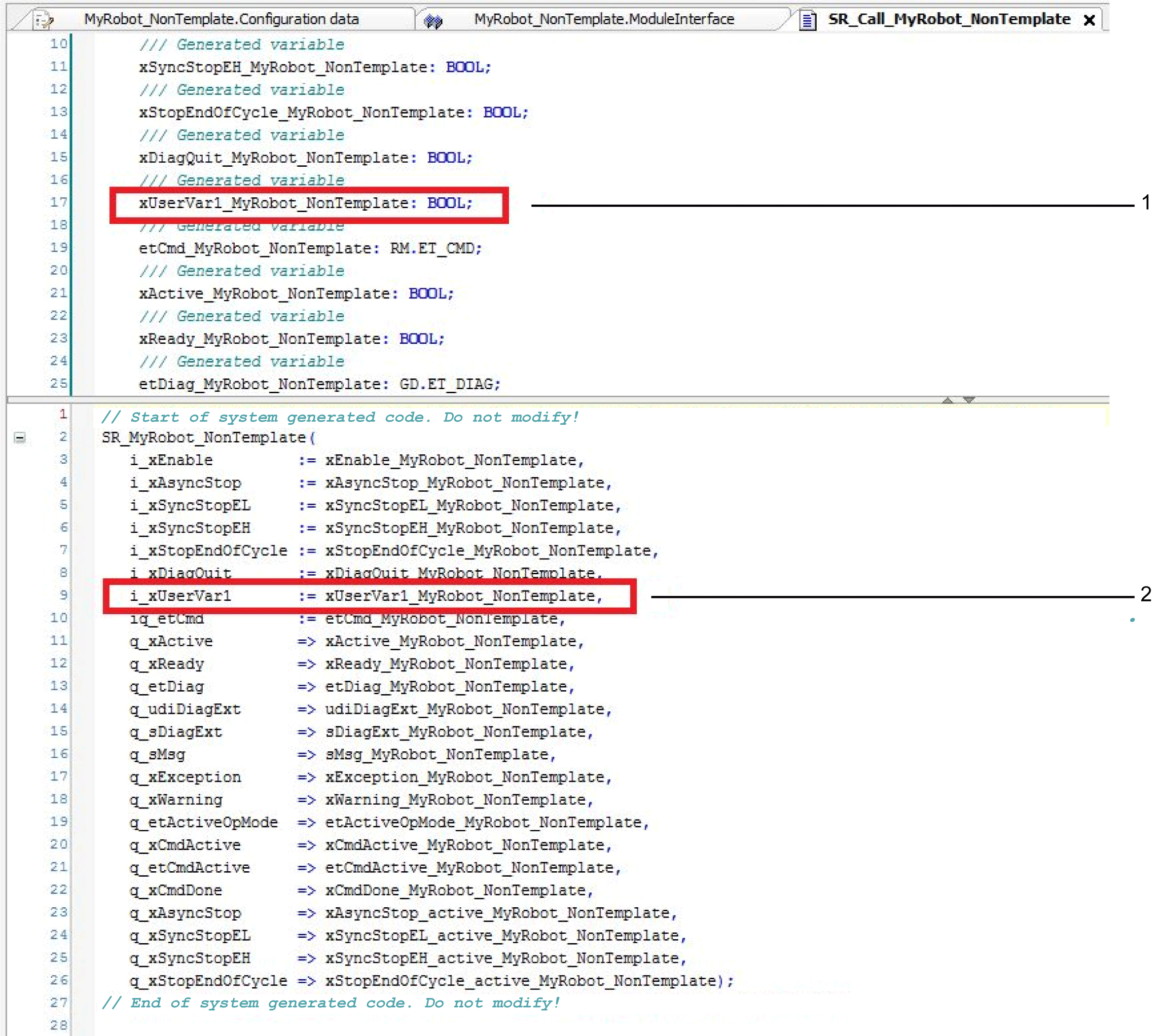
Adding User-Specific Code to the SR_Call_<Robot Name> Program
Additional user-specific variables
Define additional user-specific variables in the declaration part of the program:
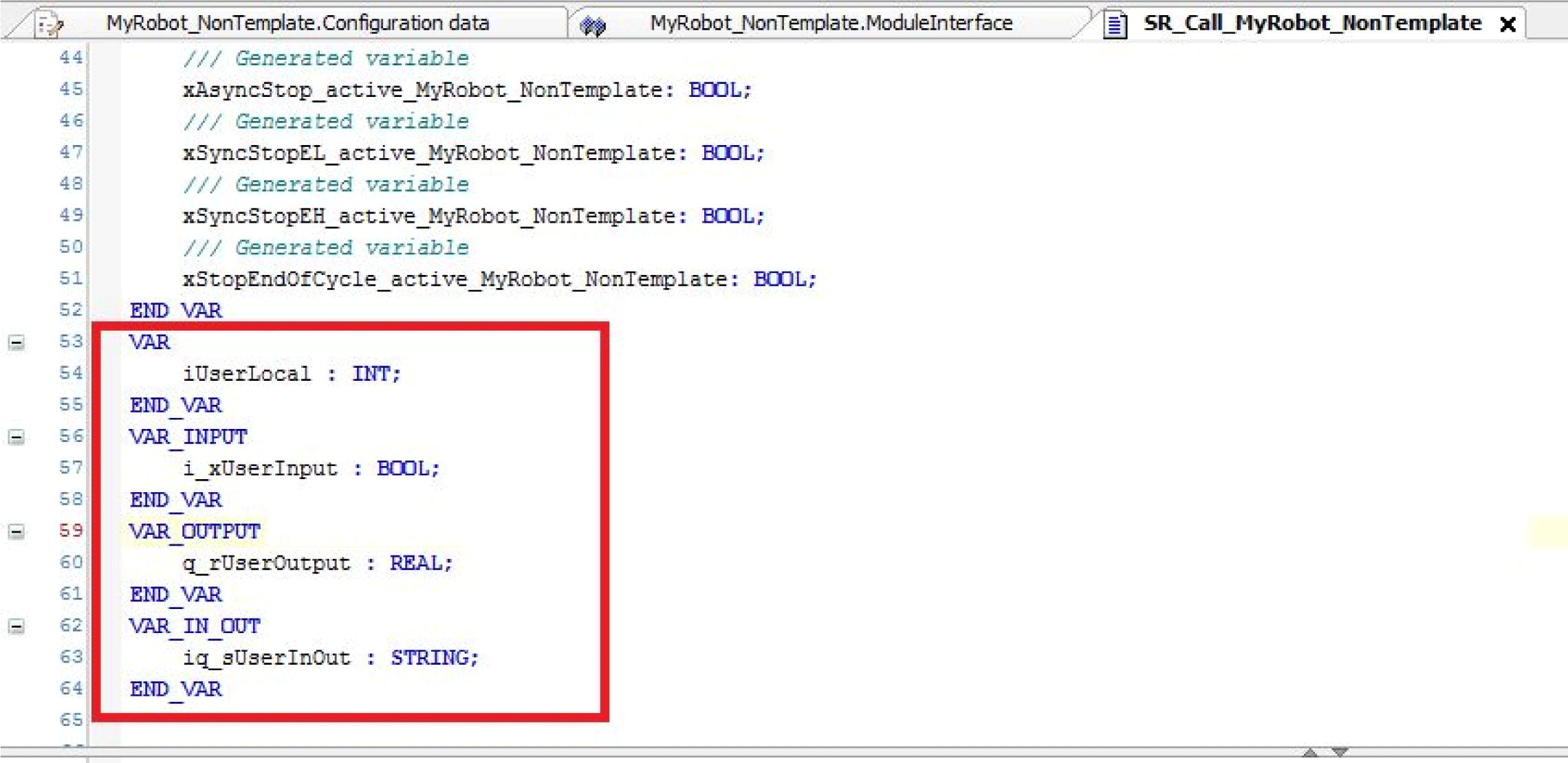
Additional user-specific code
Only integrate additional user-specific code in the body of the generated program call at the following positions:
-
Before the generated code part (1) or
-
After the generated code part (2)
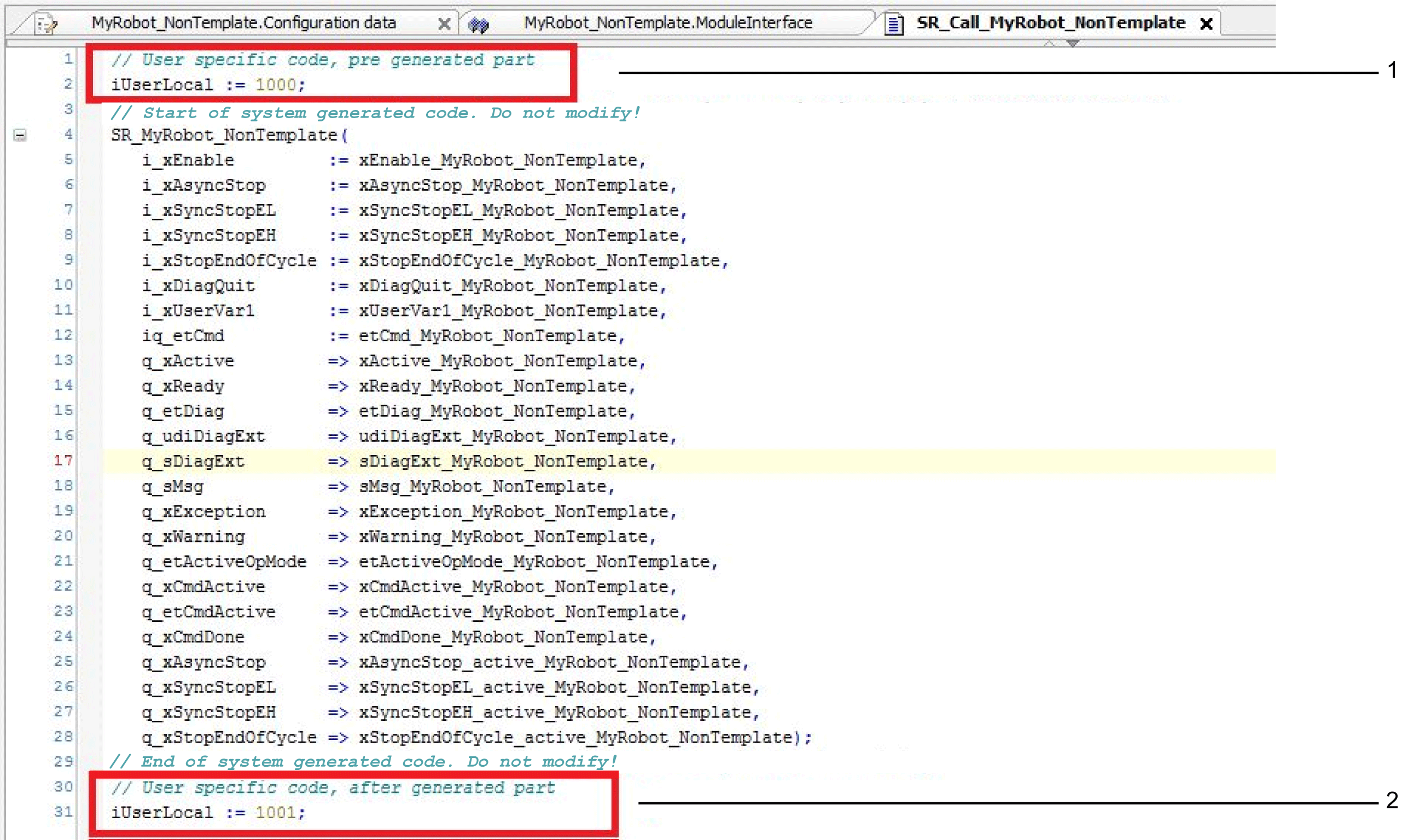
After code regeneration, the declaration is slightly different because there is only one section per variable type:
-
The section of the user-defined local variables is merged with the section of the generated local variables.
-
The other variable type sections (VAR_INPUT, VAR_OUTPUT, VAR_IN_OUT, …) remain unchanged.
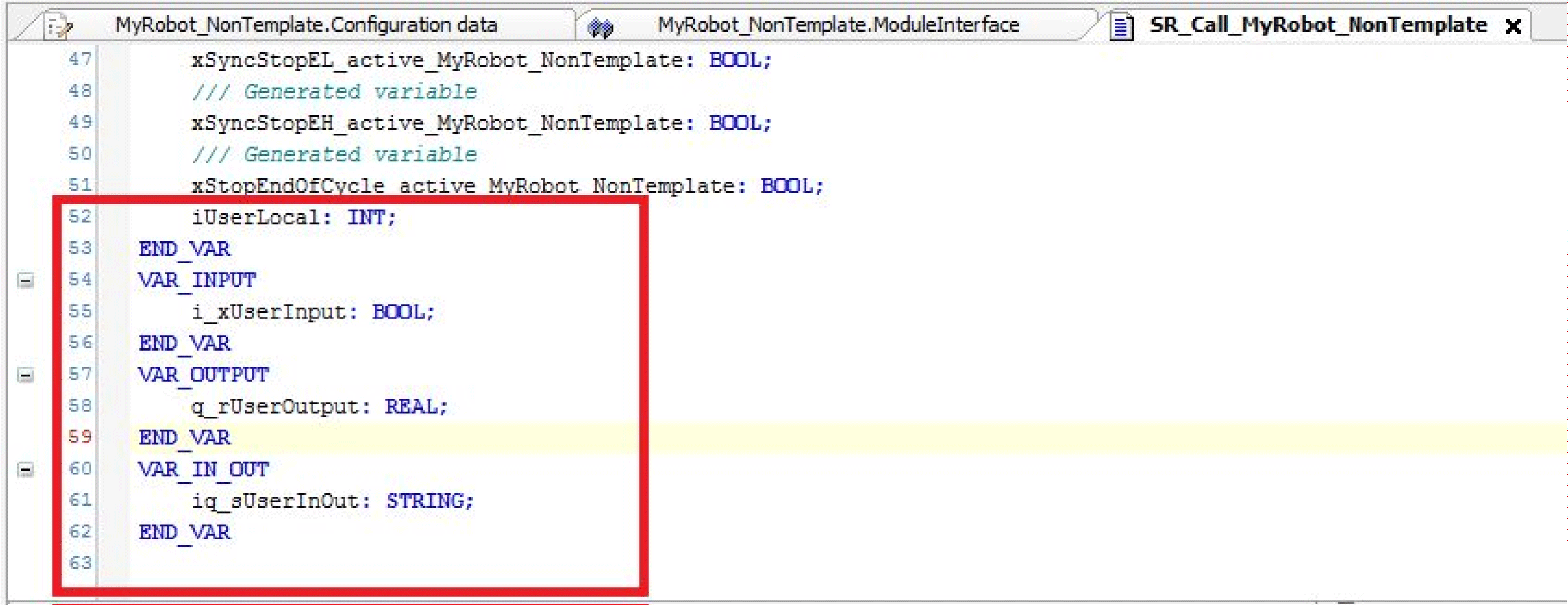
The body part remains unchanged after code regeneration if the following considerations are observed for additional code implementation:
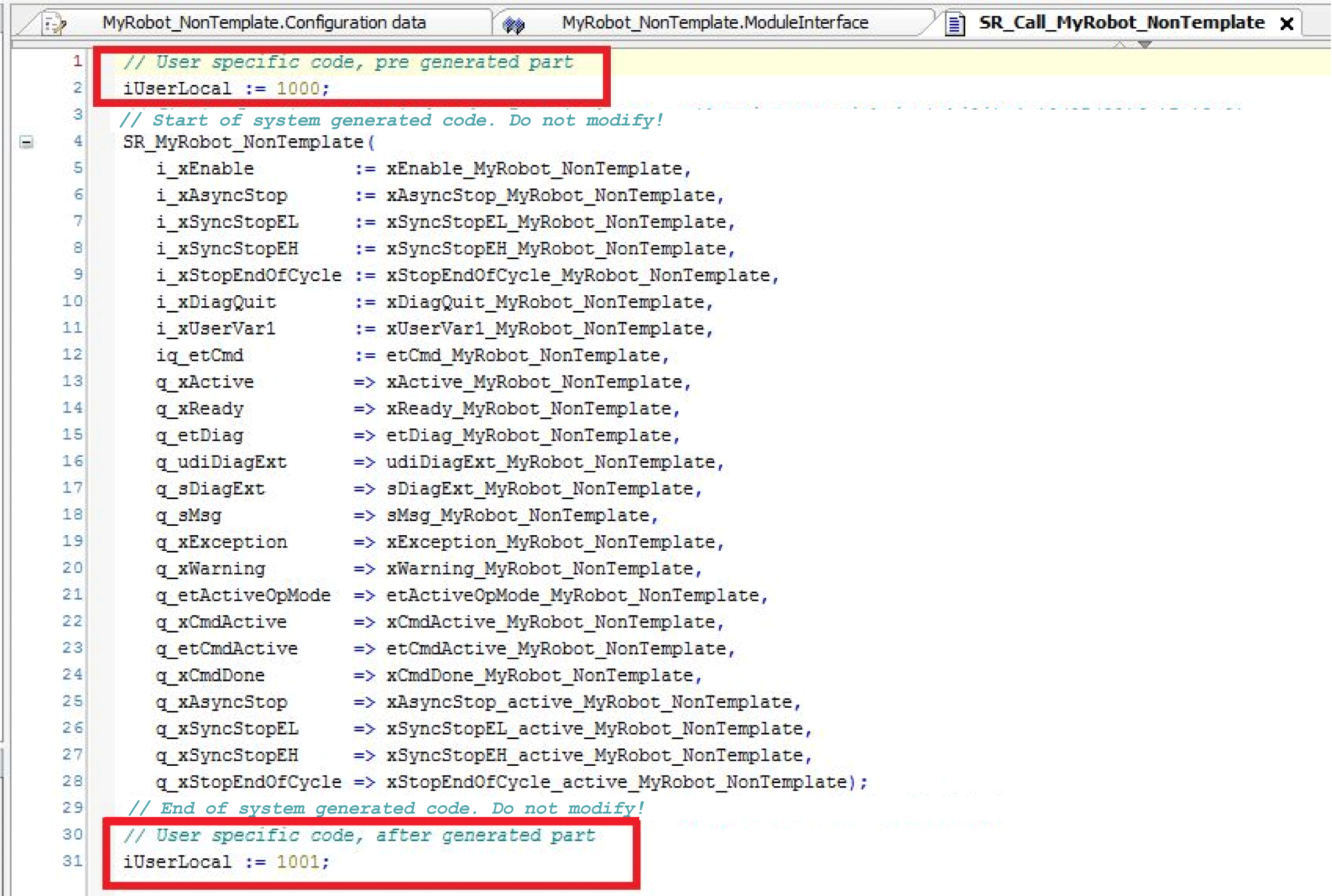
Restrictions Regarding Program Call Regeneration
Do not modify the system generated declaration and implementation of the code snippets.
This is essential for program call regeneration of the generated code.
Do not modify this generated variables block.

Do not modify this generated body block (including the two comment lines).
